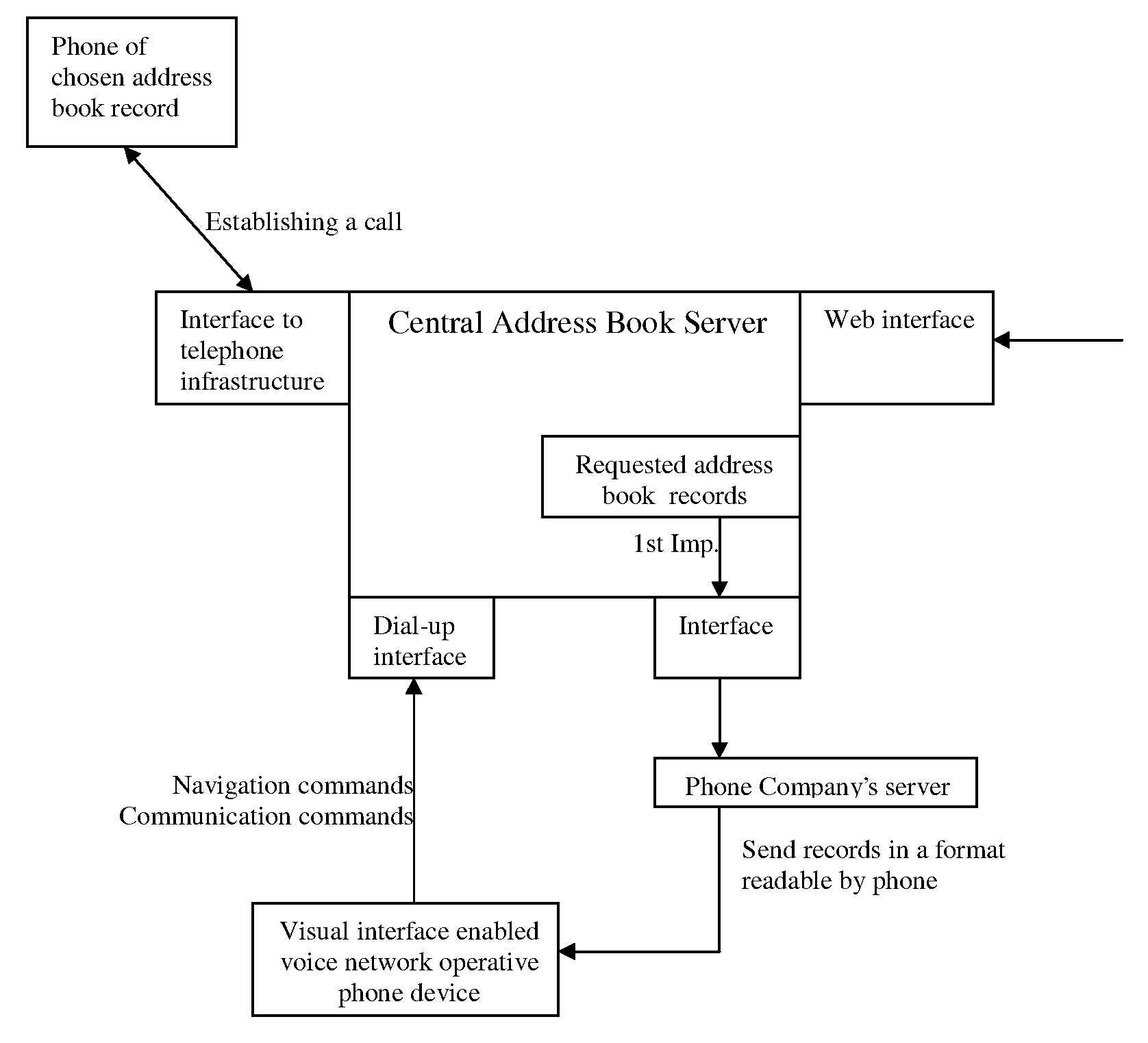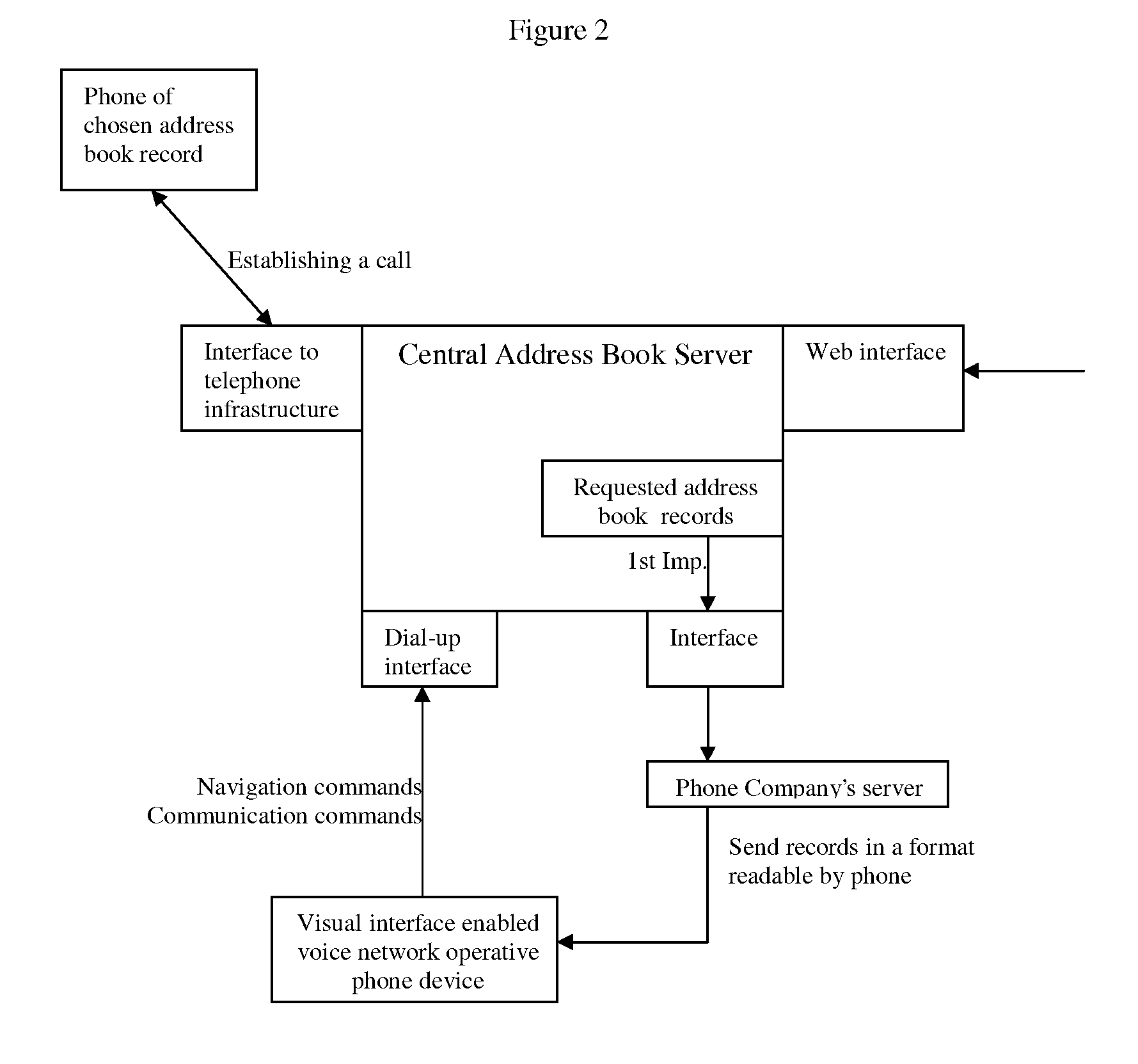Method for Interacting Via an Internet Accessible Address-Book Using a Visual Interface Phone Device
a telephone device and internet access technology, applied in the field of visual interface-enabled voicenetworkoperative telephone devices, can solve the problems of cumbersome methods, inconvenient difficult to learn how to program new phones, so as to simplify the user's convenien
- Summary
- Abstract
- Description
- Claims
- Application Information
AI Technical Summary
Benefits of technology
Problems solved by technology
Method used
Image
Examples
first embodiment
[0129] variation of the method according to the present invention, the step of receiving access to a user's address-book includes the server accommodating a user provided copy of the address-book, and the accommodating is accomplished between the user and the server via the internet. This accommodating relates to other variations for the sharing and / or copying of data from the address-book (which may reside on the server of the instant method or will reside on some other server that provides access to the address-book). These accommodations substantially relate to issues like the security and integrality of the address-book, such as often occur for ordinary users who may maintain complete or partial copies of their address-book on cellular telephones, advanced POTS devices, personal electronic notebooks, other server side storage facilities, and the likes—all of which introduces complexities of synchronization of data, resolution of version discrepancies, and the likes. For example,...
second embodiment
[0130] variation of the method according to the present invention, the step of receiving access to a user's address-book includes granting to the server access to an Internet based address-book. This substantially relates to a different security aspect of the instant invention wherein a user requires permission or authorization or identity verification. This aspect may also include password codes, callbacks, encryption activities, or the likes.
[0131]Now according to a form of the second embodiment, the step of granting the server access includes using a predetermined Internet communications protocol schedule for updating the address-book from an internet-accessible substantially most up-to-date version of the address-book. A good utilization for the address-book occurs when a user dials up to the server. However, proactive automatic transactions may occur automatically from the user device, on a predetermined schedule, according to a predetermined threshold of necessity to initiate ...
third embodiment
[0132] variation of the method according to the present invention, the step of accepting a dial-up connection includes the server accessing an internet-accessible substantially most up-to-date version of the address-book and incorporating heretofore-unincorporated updates that have been made thereto. Just as the aforementioned transactions like activities may occur by user device initiation, there are other embodiments where these data management tasks are dominated by server side initiatives.
PUM
 Login to View More
Login to View More Abstract
Description
Claims
Application Information
 Login to View More
Login to View More - R&D
- Intellectual Property
- Life Sciences
- Materials
- Tech Scout
- Unparalleled Data Quality
- Higher Quality Content
- 60% Fewer Hallucinations
Browse by: Latest US Patents, China's latest patents, Technical Efficacy Thesaurus, Application Domain, Technology Topic, Popular Technical Reports.
© 2025 PatSnap. All rights reserved.Legal|Privacy policy|Modern Slavery Act Transparency Statement|Sitemap|About US| Contact US: help@patsnap.com



